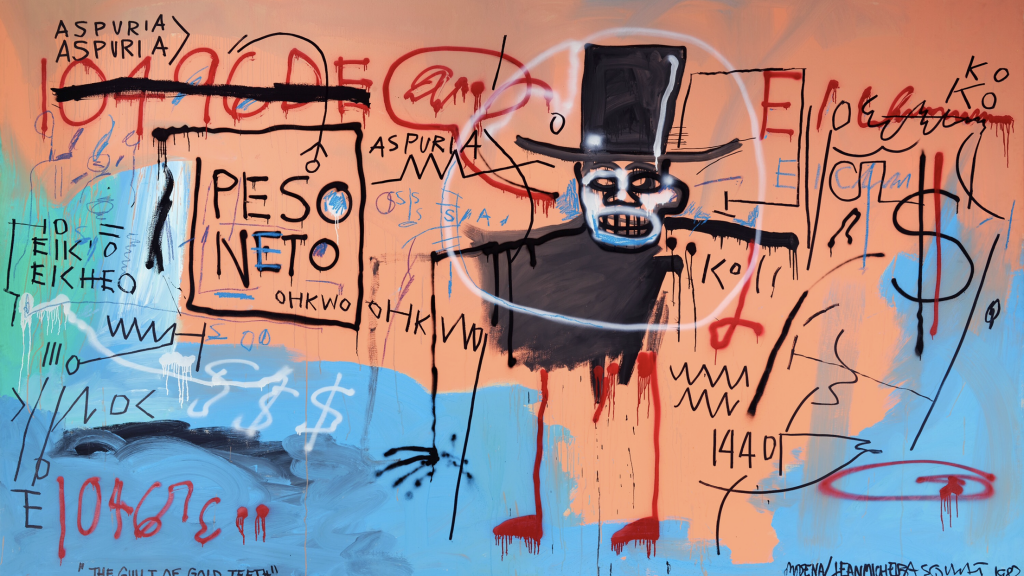Auctions
A Basquiat Painting Picked Up in 1998 for Less Than $400,000 Could Make More Than $40 Million at Christie’s in November
The painting, created by the late artist while he was in Italy in 1982, stands to make a 10,222 percent return.

The painting, created by the late artist while he was in Italy in 1982, stands to make a 10,222 percent return.

Caroline Goldstein

The manic rush for late artist Jean-Michel Basquiat’s work at auction continues this fall, as The Guilt of Gold Teeth (1982) goes on the block at Christie’s New York in its 21st Century Evening Sale on November 9.
In cantaloupe and chlorine blue, the monumental canvas—which measures almost 14 feet across—could fetch more than $40 million, making it one of the most expensive paintings by the artist to be offered at auction. The consignor purchased the painting at Sotheby’s in 1998 for a below-estimate price of $387,500, and so stands to make an eye-watering 10,222 percent return when it hits the block.
The most expensive work by the artist remains Untitled (1982), purchased by billionaire Japanese collector Yusaku Maezawa for $110 million at Sotheby’s New York in 2017, followed by In This Case (1983), a large red canvas that brought in $93 million at Christie’s New York in May 2021. Only seven artworks by any artist have surpassed $40 million at public auction, according to Artnet’s Price Database.
According to Christie’s specialist and head of sale Ana Maria Celis, as one of only eight paintings created by Basquiat while on a trip to Italy in March of 1982, “The Guilt of Gold Teeth represents an absolutely pivotal moment in Basquiat’s career,” when the artist was debuting his work on an international stage ahead of a planned show at Emilio Mazzoli’s Modena gallery. The show was canceled, however, because the artist felt pressured to churn out massive canvases at an alarming pace; he severed ties with Mazzoli and his New York dealer Annina Nosei (who had made the introduction) and returned to the U.S.
The central figure depicted on the canvas is Baron Samedi, a prominent spirit of the dead in Haitian Vodou, tasked with accepting individuals into death, though he is also responsible for resurrection, and so represents both life and death. Characterized by an ever-present top hat and black coattails, the baron is often portrayed as a skeletal figure wearing dark glasses or with blacked-out eyes, and is associated with rum and cigars. (The baron also makes an appearance in Basquiat’s 1987 painting Después de un Puño.) The canvas is also covered in the artist’s recognizable scrawl, with numbers, letters, dollar signs, and words all over—one nonsense term, “aspuria,” could be a play on the Italian word for aspire, according to the auction house. The title is written in quotation marks on the front of the painting, and it is signed “Modena/Jean Michel Basquiat 1982” on the front corner—a rarity for the artist.